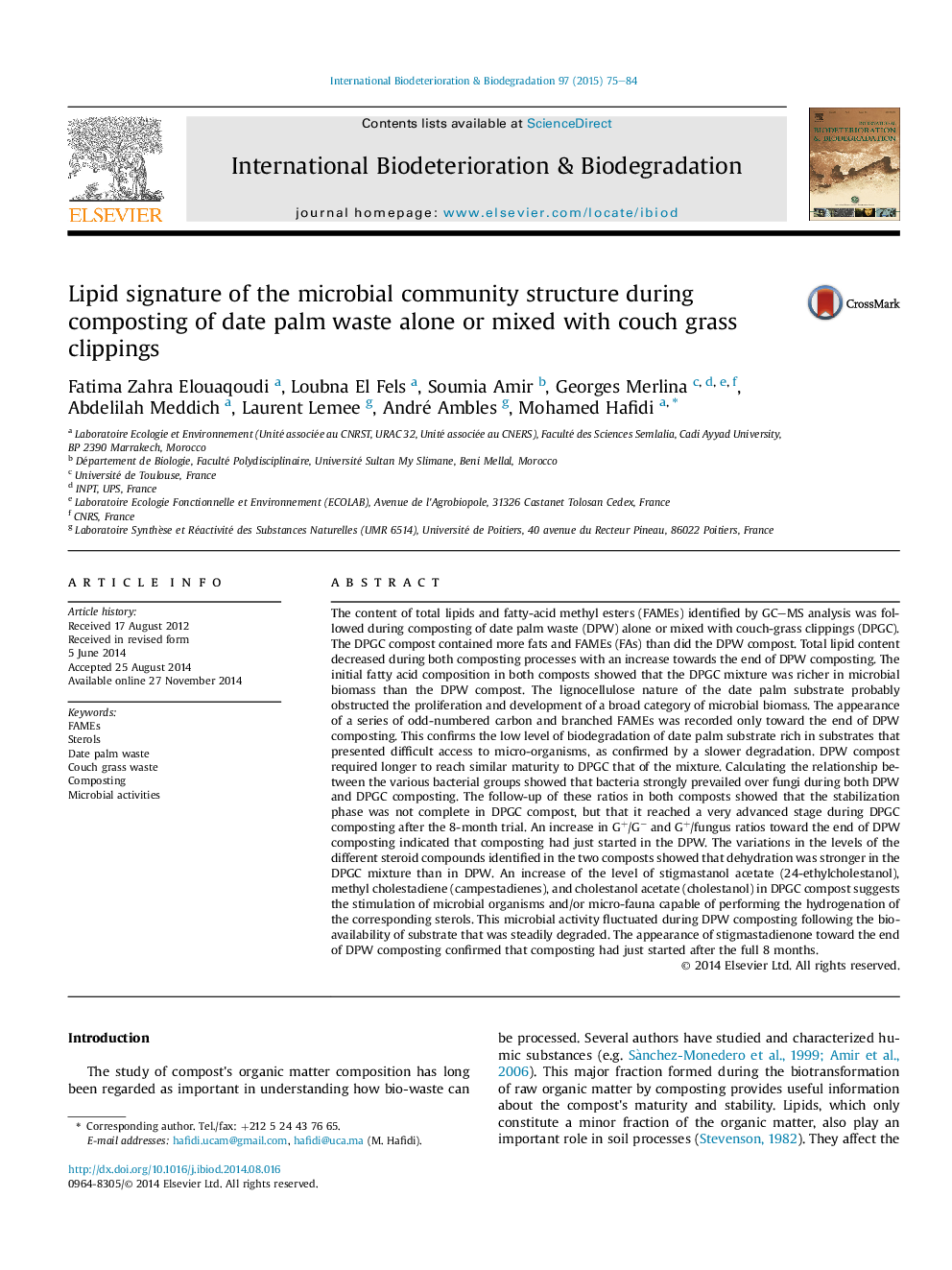| کد مقاله | کد نشریه | سال انتشار | مقاله انگلیسی | نسخه تمام متن |
|---|---|---|---|---|
| 4364669 | 1616320 | 2015 | 10 صفحه PDF | دانلود رایگان |
• Lipids and individual fatty-acid methyl esters (FAMEs) during the composting of date palm.
• Sterol fraction during composting of date palm.
• Microbiologiques index of compost maturity.
The content of total lipids and fatty-acid methyl esters (FAMEs) identified by GC–MS analysis was followed during composting of date palm waste (DPW) alone or mixed with couch-grass clippings (DPGC). The DPGC compost contained more fats and FAMEs (FAs) than did the DPW compost. Total lipid content decreased during both composting processes with an increase towards the end of DPW composting. The initial fatty acid composition in both composts showed that the DPGC mixture was richer in microbial biomass than the DPW compost. The lignocellulose nature of the date palm substrate probably obstructed the proliferation and development of a broad category of microbial biomass. The appearance of a series of odd-numbered carbon and branched FAMEs was recorded only toward the end of DPW composting. This confirms the low level of biodegradation of date palm substrate rich in substrates that presented difficult access to micro-organisms, as confirmed by a slower degradation. DPW compost required longer to reach similar maturity to DPGC that of the mixture. Calculating the relationship between the various bacterial groups showed that bacteria strongly prevailed over fungi during both DPW and DPGC composting. The follow-up of these ratios in both composts showed that the stabilization phase was not complete in DPGC compost, but that it reached a very advanced stage during DPGC composting after the 8-month trial. An increase in G+/G− and G+/fungus ratios toward the end of DPW composting indicated that composting had just started in the DPW. The variations in the levels of the different steroid compounds identified in the two composts showed that dehydration was stronger in the DPGC mixture than in DPW. An increase of the level of stigmastanol acetate (24-ethylcholestanol), methyl cholestadiene (campestadienes), and cholestanol acetate (cholestanol) in DPGC compost suggests the stimulation of microbial organisms and/or micro-fauna capable of performing the hydrogenation of the corresponding sterols. This microbial activity fluctuated during DPW composting following the bio-availability of substrate that was steadily degraded. The appearance of stigmastadienone toward the end of DPW composting confirmed that composting had just started after the full 8 months.
Journal: International Biodeterioration & Biodegradation - Volume 97, January–February 2015, Pages 75–84
